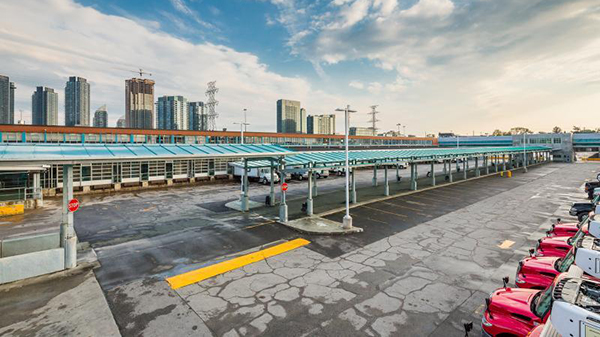With 5,000 buyers and an annual throughput of over 2 billion pounds of produce, the Ontario Food Terminal plays a crucial role in the North American fresh produce industry.
It had been rumored to be moving, but Ontario Agriculture Minister Ernie Hardeman said in July on local television that the terminal is not moving from its location in Etobicoke. But the government will review ways to improve it.
Established back in 1954, the self-funding OFT is a 40-acre site often described as Ontario’s stock market for fruits and vegetables.
Since its inception, the terminal has operated as an incubator of sorts, accommodating upwards of 400 small business farmers who offer locally sourced produce in OFT’s 10-acre farmers market. It is a busy, close-knit community. Buyers benefit by building long-term relationships with growers and enjoy the convenience of a centralized marketplace.
The OFT’s tenant wholesales have an extraordinary reach—they supply domestic and imported produce to buyers from across Ontario and Quebec, as far east as Newfoundland and Labrador, north to Greenland and the Arctic Circle, west to Vancouver, and down into cities in the northern United States such as Detroit.
Buyers include not only more greengrocers and restaurants, but foodservice companies that deliver to hospitals, universities, hotels, schools, caterers, and other large produce consumers.
On any given day, the 21 largest wholesalers drive the majority of the business in the market and are represented by the Toronto Wholesale Produce Association. Buyers can join the TWPA and then buy on credit, making transactions faster and easier.
The sprawling terminal actually offers buyers, and its broader set of stakeholders in the Toronto area much more than meets the eye, due to the fact that many tenants operate auxiliary warehouses beyond the OFT proper.
Bruce Nicholas, general manager of the market, notes, “The relationships and deals made at the terminal are often multiplied two or three times because the buyer will say to a farmer, ‘give me five pallets, but send 20 or 40 to those two stores from your warehouse.’ With only 44 employees, we have a very large economic impact because not only do we move 2.1 billion pounds of produce directly through the terminal each year, but we’re also facilitating another two or three times that indirectly.”



